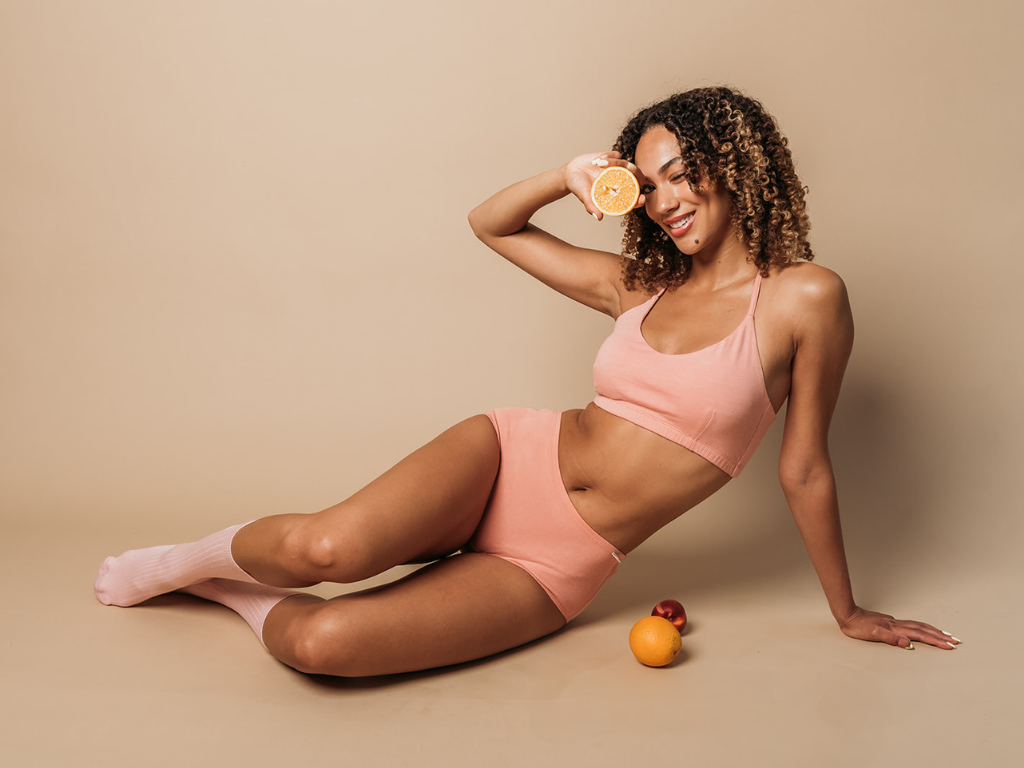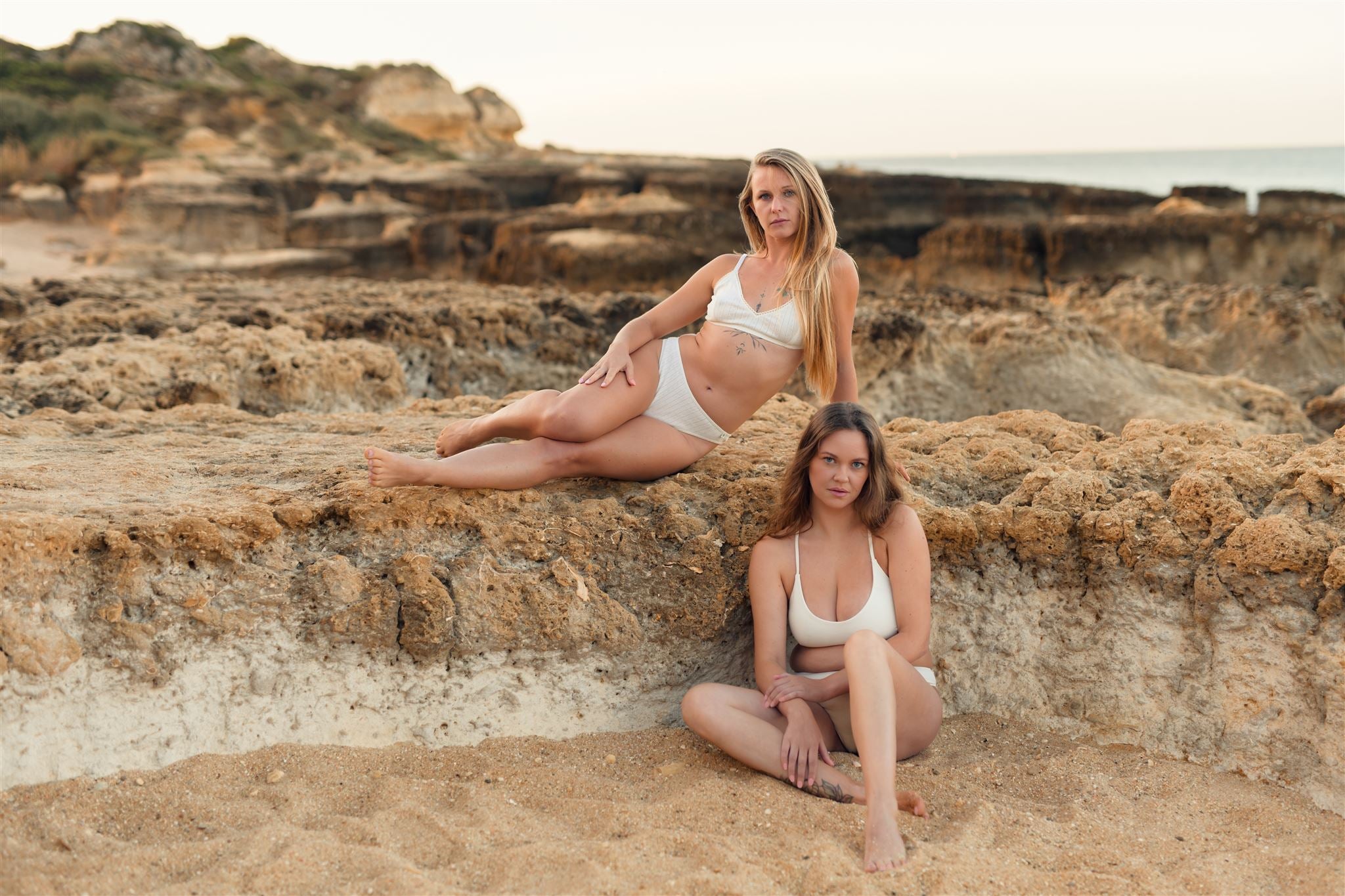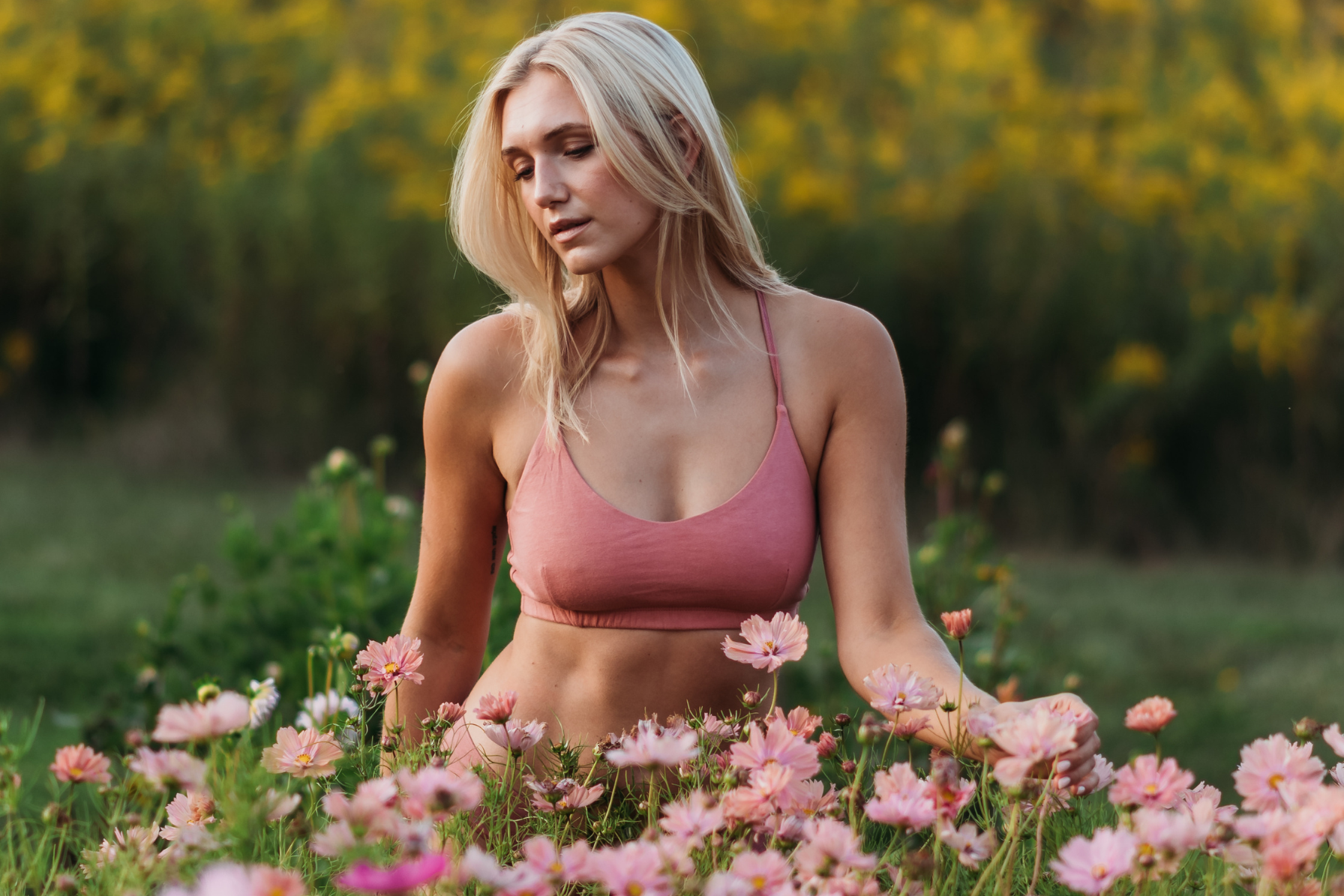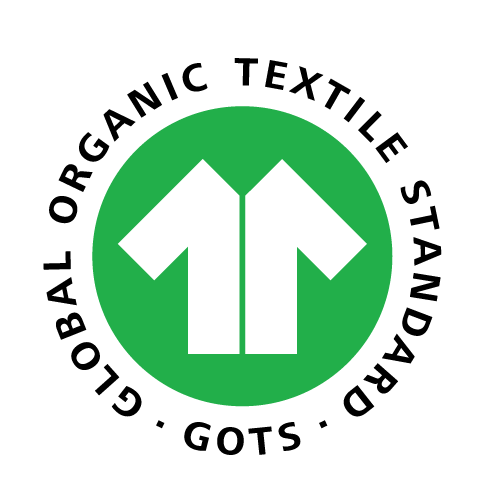
Do Natural-Dye Bras Exist and Are They Better for You?
Yes – natural-dye bras do exist, and many women are discovering that these bras, often made from organic cotton, can be a healthier choice for both you and the planet. In recent years, eco-conscious brands have launched bras and bralettes colored with plant-based dyes or left entirely dye-free to eliminate the harsh chemicals found in conventional lingerie.
The big question is, are these naturally-dyed, organic cotton bras actually better for you? Let’s explore what makes natural dyes and organic fabrics different, and why switching to a “clean” bra could be a game-changer for your comfort, health, and peace of mind.
The Problem with Conventional Bra Dyes
Imagine a bra you forget you're wearing. Not because it lacks support, but because it's so gentle, and non-irritating, that the only reminder is the comfort. You are probably considering factors like the fit, the straps, or the fabric. But have you ever stopped to think about the color? More specifically, what gives it that color?
The truth is, most bras are dyed with a cocktail of synthetic chemicals. The textile industry uses over 8,000 synthetic chemicals to turn raw materials into finished garments, with conventional dyes and their fixatives being a major source of hazardous substances like heavy metals and formaldehyde. These dyes are designed to be cheap, long-lasting, and vibrant, but not skin-safe.
Very often, the most irritating part of your bra isn't the wire, but the dye.
Conventional bras are colored with synthetic dyes, primarily made from petroleum. The biggest offenders are azo dyes, which can break down into carcinogenic chemicals. Beyond long-term health concerns, these dyes are a direct cause of common skin complaints like, persistent itchiness, rashes and irritation.If you're seeking a solution, consider a bra made from natural fabrics, which are gentler on the skin and free from harmful chemicals. To learn more about natural bra materials, check out our Best Bra Material Guide.
The Hidden Chemicals in Conventional Bras
- Toxic Dyes: The vibrant colors in lingerie often come from azo dyes, a class of synthetic dyes known for their wide range of shades. Unfortunately, certain azo dyes can break down and release aromatic amines, chemicals considered potentially carcinogenic. These carcinogenic dye byproducts can be absorbed through the skin when you wear the garment. Europe has banned the use of such azo dyes in textiles that touch the skin, but shockingly, about 40% of textiles sold in the U.S. still contain azo dyes.
- “Forever Chemicals” and Finishes: It’s not just the dyes – many bras (especially those with synthetic foam cups or fancy “performance” features) contain chemical additives. A recent study revealed that over 50% of tested bras contained PFAS (so-called “forever chemicals”) in notable amounts. PFAS are used to add properties like moisture-wicking or stain resistance, but they don’t break down in the body or environment. Health experts warn that PFAS and other common clothing chemicals (like phthalates in elastic) are endocrine disruptors, meaning they can interfere with hormones.
- Skin Irritants: Even if we set aside long-term health risks, conventional bras often trigger more immediate issues like skin irritation. Dermatologists have found that materials like certain polyester/nylon blends, latex in elastic, and the chemical finishes in bras can cause contact dermatitis (allergic rashes) on the skin. Many women who experience itchy red marks or even blistery rashes under the bust don’t realize it might be an allergic reaction to dyes or chemicals in the bra.
The bottom line? Conventional bras can harbor a cocktail of chemicals, from dyes that leach carcinogens to finishing agents that irritate skin.
Dye-free bras and Natural plant-dyed bras
This leads to a simple question: Are there bras made with organic materials and natural dyes, and do they actually make a difference for your skin and health?
The answer is a resounding yes. At Q for Quinn, we’ve built our entire collection on the belief that what you wear against your skin should be gentle, safe, and free from toxins. Let’s explore what natural-dye bras are and what makes them the better choice.
So, what are the safer alternatives? At Q for Quinn, we focus on two gentle collections: dye free bras and plant dyed bras.
Dye-free bras are the purest option available. These bras are made from fabric in its natural, undyed state. For organic cotton, this means a soft, creamy off white color. Choosing dye free is the ultimate way to ensure zero chemical exposure from colorants. This approach is recognized as the safest by the Global Organic Textile Standard, which certifies textiles made without hazardous synthetic dyes and processing chemicals. It’s an incredibly safe choice, which is why we offer a range of natural dye free underwear.
Natural plant-dyed bras are the best choice for those who want color without the health risks. Instead of using synthetic chemicals, these bras are colored using pigments derived from nature. Think roots, fruits, leaves, and barks:
- Madder root creates soft pinks and deep reds.
- Turmeric makes warm yellows.
- Walnut shells produce rich tans.
This is the future of intimate apparel: organic bras and bralettes that are as skin safe as they are stylish.
Why are Naturally-Dyed Bras Better for Your Skin?

Your skin is smart. It knows the difference between fabric that feels like second skin and fabric that's chemically coated. If you've ever had a random itch or a blotchy rash under your bra seemingly from out of nowhere, your skin was trying to tell you something. This is a common reaction, as textile contact dermatitis is a documented condition scientifically linked to synthetic dyes and chemical residues in clothing.
Switching to a natural-dye bra means finally listening to your skin. No more mystery residues from azo dyes or PFAS, just color from natural sources like plants, that are proven to be safe.
But it’s not just about taking things away. Some of the plants used for color have inherent benefits. Turmeric, for instance, is recognized in scientific literature for its anti-inflammatory and soothing properties. Put the gentle dyes with the absolute breathability of organic cotton, and your skin finally feels at home. It’s the kind of comfort you don’t even notice.
Think of your favorite cotton t-shirt, the one that’s soft and breathable enough to wear to bed. That’s the feeling your bra should have. This isn't a guess. It's science. Synthetic materials and dyes block your skin. Organic cotton lets heat and moisture escape. As a result, your skin stays cool, dry, and calm. No more irritation. Just reliable comfort.
Checklist Before Buying a Natural-Dye Bra

Choosing a bra that is both safe and comfortable doesn't have to be confusing. Use this straightforward checklist to guide your purchase, from reading the label to understanding long-term care.
Step 1. Examine the Fabric Content
Look for bras made from 100% organic cotton. The product description should be clear and specific. Blends with synthetic materials like polyester or nylon are more likely to contain chemical residues. Invest some time in learning how to identify true organic cotton.
Step 2. Check Safety Certifications
Trust independent labels over marketing claims. The OEKO-TEX Standard 100 certification is a key one to look for, as it verifies the fabric has been tested for a list of over 100 harmful substances.
Step 3. Look for the Gold Standard: GOTS
For the highest assurance of organic integrity from field to finished product, look for the Global Organic Textile Standard (GOTS) label. This certification not only guarantees the material is organic but also ensures strict environmental and social criteria are met throughout the entire manufacturing process. Another important certification is OEKO-TEX® Standard 100. This certification is all about safety in finished textiles. An OEKO-TEX 100 label means every component of the product – fabric, thread, dye, elastic, etc. – has been tested and shown to contain no harmful levels of over 100 problematic substances
Step 4. Be Wary of "Performance" Buzzwords
Treat marketing terms like “stain-resistant,” “wrinkle-free,” or “odor-fighting” as red flags. These features are often achieved with PFAS and formaldehyde-based finishes, which you want to avoid in intimate wear.
Step 5. Read the Care Instructions
The care label can tell you a lot. Instructions that recommend cold water washing and air drying often indicate the use of gentler, natural dyes that don't require harsh chemical stabilizers. This is a good sign.
Step 6. Embrace Natural Dyes
Understand that bras dyed with plants will fade gently over time. This is not a defect but a natural characteristic. It confirms the absence of the harsh chemical fixatives used in conventional dyeing to lock in color.
By following these six steps, you can move beyond claims and make an informed, confident choice for your health and comfort.
Final Thoughts
The evidence is clear: the bras we wear against our skin can be a source of unseen chemical exposure. But the good news is, this isn't an unavoidable reality. Natural-dye bras, crafted from genuine organic materials, are not a futuristic concept, they are an available, healthier alternative that deliver undeniable comfort and complete peace of mind.
Choosing a bra free from synthetic dyes and toxic finishes is a simple yet powerful act of self-care. It’s a decision to listen to your skin, eliminate a source of daily irritation, and invest in your long-term well-being.
You can stop wondering if a safer, softer option is out there. It is.
Every bra and bralette in the Q for Quinn's organic cotton women underwear collection is made from GOTS-certified organic cotton and colored with natural and plant-based dyes, because we believe your comfort and safety should be guaranteed.













